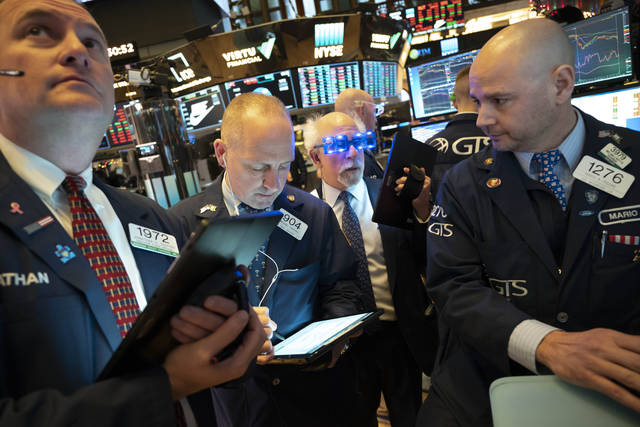Peter Morici: Don’t miss out on another banner year for stocks
The U.S. equities are wrapping up a banner year. The S&P 500 index is up well more than 25% but sadly many small investors bailed out too early.
In 2019, the financial press was full of warnings about Trump’s tariffs, estimates of job losses instigated by Chinese retaliation, and criticism of the wisdom of his tax cuts. After a tax-cut sugar high consumers, it was feared, would retreat and send the economy into recession.
Visible signs of pending collapse were apparent — shuttered stores and restaurants — but those are deceptive. They are the flip side of new, less-visible fulfillment centers for Amazon and other online retailers, and ghost kitchens for DoorDash, Grubhub and the like.
Facebook, Apple, Amazon, Netflix and FAANGs and other techs drove much of the decade’s stock surge but now face tax and antitrust scrutiny — all created concerns that a bubble could burst.
Individual investors pulled about $136 billion out of mutual funds and similar vehicles as the stock market surged and took a lesson in the folly of market timing.
What individual investors often have trouble seeing is the dynamism of a healthy economy — the buildout of fulfillment centers noted above, the future risks that problems like Chinese mercantilism pose if left unaddressed and labor-force capacity for adjustment.
President Trump did not face a choice between the status quo or stiff tariffs and Chinese retaliation. If he protested to President Xi Jinping and then did nothing but endlessly negotiate like his predecessors, U.S. imports from China would have continued growing.
Instead, the United States is now sourcing more products from elsewhere in Asia, Mexico and even at home and creating the potential for more welcoming customers for American goods and services.
In a full-employment economy, workers displaced from Midwestern farms and factories in the wake of Chinese retaliation found new jobs quickly, and manufacturing is hardly in the recession naysayers allege — adjusting for the GM strike, factory jobs are up 31 of 33 months of the Trump presidency.
Private equity is flush with capital but after the WeWork debacle and Uber and PO flops, investors are getting more stingy with aspiring unicorns. Eventually, rich folks’ extra cash will find itself to new places like U.S. real estate and stocks.
Globally, the share of income saved has increased dramatically. A lot of those savings are finding their way into sound U.S. assets too.
Equities are fairly valued — the price-earnings ratio for the S&P 500 is about 24 and that is in line with the 25-year historical average of 25.
The U.S. economy is strong and stable and poised to continue growing in 2020. First-quarter growth will take a hit from Boeing’s decision to halt 737 Max production, but it should recover nicely the rest of the year.
Recognizing this, investors have poured into cyclical stocks like banks, manufacturers and oil companies as opposed to defensive stocks like utilities and consumer staples. Corporate profits are expected to advance 9.6% in 2020 and that should enable a similar jump for stocks.
Ordinary investors should not try to pick stocks or time the market — they don’t have the information to find the next Apple with confidence and they face better odds betting on football than trying to call the next market turn.
Invest in an S&P 500 index fund, and perhaps an international index fund to smooth returns — sometimes U.S. equities do better while other times foreign stocks lead. If you are retired, hedge by keeping about 50% of your money in Treasuries with three- to seven-year maturities.
Peter Morici is an economist and business professor at the University of Maryland.
Remove the ads from your TribLIVE reading experience but still support the journalists who create the content with TribLIVE Ad-Free.

